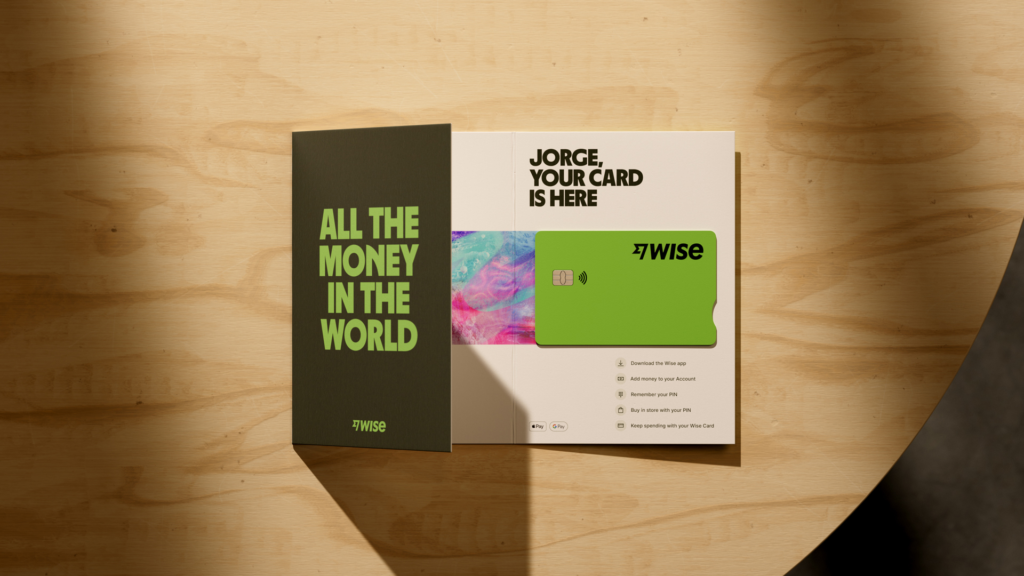JPY Card in Australia: What are the Options? [2023]
If you’re headed to Japan for work, to study, or for a holiday, you might be wondering about the best way to get a JPY card before you head off. Having a JPY card can make it easier and cheaper to spend yen while you’re away, and can also be a smart way to cut costs and manage your travel money budget.
However, JPY card features and fees do vary widely, so you’ll need to do a bit of research to figure out which JPY cards are best to pick.
This guide walks through all you need to know, including a look at how JPY cards from providers like Wise and Revolut can help you get a better deal on your overseas spending.
What is a JPY card?
A JPY card allows for convenient spending and withdrawals in Japanese yen. JPY cards can also be called multi-currency cards and may come with other foreign currencies available for spending too. You’ll be able to load funds your account in AUD and convert to yen before you travel. That means you can plan your budget in advance, and lock in exchange rates before spending. Some cards also offer the alternative to add AUD and convert instantly at the time you spend.
What is a JPY card good for?
Getting a JPY card is handy for anyone headed to Japan to study, for work or for leisure travel.
A JPY card can make spending safer while you’re away as you won’t need to carry a lot of cash. And because your travel money account isn’t linked to your regular bank account, even if you were unlucky enough to have your card stolen, the thieves won’t have access to your primary account. It’s helpful to know that Japan is a cash dominated society, so getting a JPY card which offers free or low cost ATM withdrawals can also be a big help.
Using a JPY card while you’re away can also cut the costs of currency conversion, and allow you to get a better exchange rate. You’ll be able to add money in AUD and switch to yen so you know your budget well in advance – often with better rates compared to the banks, as well.
Pros and cons of JPY card
Pros:
- Cards can often be used for JPY and a selection of other currencies
- Some card services offer preferential exchange rates to card holders
- Using a travel money card when you’re abroad can be safer than relying on cash or your normal card
- It’s usually free to spend currencies you hold in your account
- You can avoid currency exchange stores and simply make cash withdrawals on arrival in your destination
Cons:
- Different accounts come with their own fees which can include monthly charges or currency conversion costs
- Not all cards can support JPY, so you’ll need to make sure the one you pick is suitable
- Topping up your card might incur a fee, depending on how you make your payment
5 best JPY cards in Australia
The good news is that there’s a pretty wide choice of JPY cards you can get from Australia. Let’s look at our top 5 picks so you can decide which is right for you.
Wise
Open your Wise account online or in-app, to hold and exchange 50+ currencies. Order your Wise card for a low one time charge, and load funds for free in AUD. Then convert to JPY using the mid-market rate and low, transparent fees for simple spending when you travel. You can get local account details for JPY and 9 other currencies to get paid fee free, and you can also send payments to 80+ countries.
Pros:
- Currency conversion charges from 0.41%, with the mid-market rate
- Convert in advance or let the card automatically switch to yen as and when required
- No monthly fees or minimum balance
Cons:
- Some transaction fees apply, including ATM charges once you’ve exhausted your fee free allowance
- No cash top up options
Read a complete Wise review here
Revolut
You can open a free Revolut account or choose to upgrade to an account with more features, for a monthly charge of up to 24.99 AUD. All accounts come with the option to hold and exchange JPY, and linked physical and virtual cards for easy spending. Depending on the account you hold you can get some fee free currency conversion, too, with relatively low fees once your plan allowance is exhausted – 0.5% in most cases. A couple of other charges might apply, including an out of hours conversion charge of 1% which you’ll want to watch out for.
Pros:
- Choose the account plan that suits your needs
- All accounts have some fee free currency conversion
- Physical and virtual card options
Cons:
- Charges apply for the most feature packed account tiers
- Out of hours fees of 1% apply when converting currencies at night and at the weekend
Read a complete Revolut review here
Australia Post
Australia Post has a Travel Platinum Mastercard you can use to hold, spend and exchange 11 currencies conveniently. There’s no charge to get a card and no fee to spend currencies you hold, although you might pay a fee to load funds, depending on how you’d like to add funds. You can manage your account online easily and also access other handy perks like free wifi and easy ways to send money from one AusPost card to another.
Pros:
- Up to 11 currencies supported
- Free wifi when you top up 100 AUD
- Instant transfers from one AusPost card to another
Cons:
- Local and international ATM charges apply
- Currency conversion may include a markup on the exchange rate applied
Travelex
Travelex is a well known currency conversion service, which offers its Travel Money Card to hold 10 currencies and conveniently switch between them when you need to. It’s free to get a card online and free in store if you load funds in a foreign currency – if you’re adding money in AUD instead you’ll pay up to 15 AUD when you add funds. Travelex has no ATM fees, but there’s an inactivity charge if you don’t use your card frequently and still have a balance.
Pros:
- 10 major currencies supported
- Order online or in a store, to collect instantly
- Free wifi is available
Cons:
- 10 AUD closure fee, plus 4 AUD/month inactivity charge if your card isn’t used in 12 months
- Currency conversion may include a markup on the mid-market rate
Read a complete Travelex review here
CommBank
CommBank’s travel money card supports 13 major currencies, and is free to get. There’s no charge to load funds, but you might find that the exchange rates used to switch over to JPY includes a markup – this is an extra charge rolled into the rate. ATM fees apply, and there’s a 3% foreign transaction charge if you spend in a currency you don’t hold, or if you don’t have enough balance in the required currency to cover your purchase.
Pros:
- No order charge
- There are free ways to load funds
- 13 currencies supported
Cons:
- 3% foreign transaction fee if you don’t have the currency you need
- ATM fees apply when you withdraw
Where can I use a JPY card?
A currency card allows you to pay in the local currency when you travel, without incurring extra costs. A JPY card is perfect if you’re headed off to Japan, as you can top up in AUD and switch over to JPY in advance so you know your budget in the local currency. Some cards also offer the option to exchange at the point of payment, which means you don’t need to worry about getting set up in advance.
JPY card in Australia
All of the JPY cards we have profiled above can be used in Australia too – but you might find that charges apply. If you don’t hold an AUD balance in your account and you use your JPY card here at home, for example, you might pay a conversion fee to switch back from yen to dollars.
Costs of getting a JPY card in Australia
Each provider will have their own charges for JPY cards – which can vary pretty widely. It’s important to review the costs in detail before you pick a card as the charges applied may be quite different to using a regular debit card. You might find fees to top up, for example, and different charges for spending and withdrawing in different currencies.
JPY card fees
Here’s an overview of the charges applied on the JPY cards we picked out earlier, to give you a bit of a picture. Other charges may also apply, so do check out the provider you’re choosing carefully.
| Provider/Service | Wise | Revolut | Australia Post | Travelex | CommBank |
| Get a card | 10 AUD | No extra fee | No fee | No fee when loading with foreign currency | No fee |
| Add money | Free to add money in 10 currencies | Free from debit cards and bank accounts in Australia – up to 2.5% for other card loads | Free by bank transfer, 1% BPay, 5 AUD by debit card | Free online for foreign currency load, 1.1% when topping up AUD | No fee |
| Account maintenance fee | None | 0 AUD – 24.99 AUD/month depending on tier | None | None
4 AUD/month inactivity fee applies |
No fee |
| Spend in JPY | Free to spend currency you hold
Convert currencies from 0.41% |
Free to spend currency you hold
Some fee free currency exchange to plan limits, 0.5% fair usage fee after that |
Free to spend currency you hold
Currency conversion uses the AusPost exchange rate which may include a markup |
Free to spend currency you hold
Currency conversion uses the Travelex exchange rate which may include a markup |
Free to spend currency you hold, 3% fee if you need to convert to JPY to spend |
| ATM withdrawal | 2 withdrawals, to 350 AUD in value free every month, 1.5 AUD + 1.75% after that | Standard accounts: 350 AUD/month free, 2% after that | 2.95% in Australia, 3.5 AUD overseas | No fee | 3.5 AUD |
What exchange rate will be used?
You’ll likely need to exchange currencies at some point when you use your JPY card, so the exchange rate you get matters. If you load funds in AUD and convert to JPY, getting a bad rate will mean less to spend in the end. Different card services have their own approaches to calculating the exchange rate. Wise offers mid-market rates, and has a transparent fee which is split out, starting from 0.41%, for example. Revolut account holders can all exchange some funds fee free, but the amount you can convert might be limited depending on your account tier. Once you’ve exhausted your allowance you’ll pay a fair usage charge of 0.5%, plus 1% out of hours costs if relevant. Other card services may take a different approach, adding a markup or foreign transaction fee when you exchange or spend in a foreign currency.
How to get a JPY card in Australia
All the providers we’ve looked at above allow you to order an JPY card online or through an app. You can also walk into a branch with some providers to pick up a card – such as Travelex. You’ll need to have a suitable form of ID to get your card – usually a passport or driving license, and you might be asked to provide your proof of address as well. Once you’ve ordered your card it’ll arrive in the post shortly after.
Check out the JPY card order process for the provider you prefer, so you can prepare everything that’s needed.
Conclusion
JPY cards are extremely useful for travellers – and can also be handy for people who shop online with retailers based in Japan. Get your JPY card in advance from Australia, add AUD and exchange to yen so you’ve got your travel money sorted and can see and manage your budget easily. Depending on the provider you pick you might also find you get better exchange rates and lower overall costs compared to using your standard bank card overseas. Options like Wise and Revolut offer easy ways to hold and convert dozens of currencies, to make travel cheaper and easier.
Other international cards
FAQ
What are the benefits of using a JPY card?
Using a JPY card when you’re in Japan can mean you get a better exchange rate and lower overall charges. You’ll also be able to manage your budget in yen easily.
Are JPY cards available in Australia?
Yes. You can get a JPY card from a service like Travelex or Australia Post – or pick an online specialist provider like Wise or Revolut for a card and account that offers even more features.
How much does a JPY card cost?
Most JPY cards have low or no initial charges, but you’ll need to look at the transaction costs that apply when you use your card. These costs include fees for topping up, ATM withdrawal charges and inactivity or closure fees.



